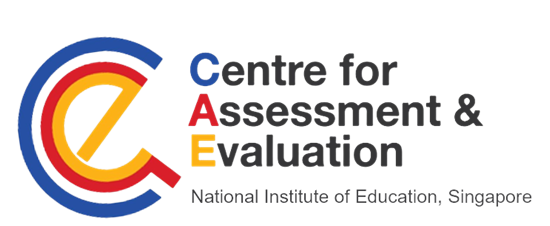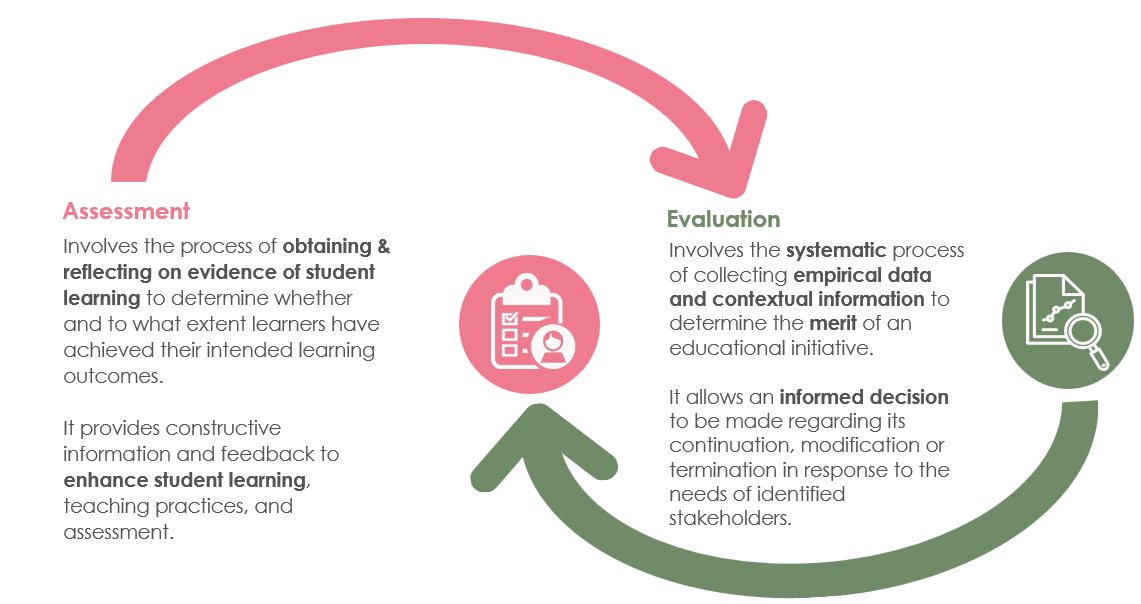About Us

Our Logo
At CAE, we embrace Assessment & Evaluation as highly connected but unique constructs.
The logo illustrates the connection between the two with the letter 'a' (for Assessment) and 'e' (for Evaluation) as interwoven, yet distinct on its own. The letters are encased within the letter 'C' (for Centre), representing how it will guide efforts of the two areas. As part of NIE, the Centre has adopted NIE colours in its logo which reflect the core identities of dynamism progressiveness and confidence.
Our Beliefs

At CAE, we subscribe to these 5 key Assessment principles:
Assessment should be central to effective teaching and learning.
- Assessment planning should be conducted in tandem with curriculum design. Both formative and summative assessments should be included within the assessment plan.
- Assessment should promote understanding of goals and criteria, and the fulfilment of learning outcomes.
- Assessment should focus on learner’s progress and not be concerned with the rank-ordering of learners.
- Feedback should be timely, clear and constructive. Opportunities to use the feedback for improvement should be provided.
1st Principle of Assessment
Assessment inference should be valid and reliable.
- Assessment should be primarily aligned to intended learning outcomes. Assessment could also support learners in developing a range of relevant skills and attitudes.
- Evidence of learning should be collected using a range of assessment methods that allow learners to clearly demonstrate their proficiency levels.
- Assessment processes should be clear and consistent.
- Assessments should try to align as close as possible to actual contexts of where the knowledge and skills are to be applied.
2nd Principle of Assessment
Assessment should be explicit, transparent and accessible.
- Information on assessment aims, method, procedures and performance criteria should be communicated to learners and staff in a clear, accurate and timely manner.
- Assessment should be set at an appropriate level and manageable for learners. If possible, autonomy could be given to learners to demonstrate their learning achievements.
- Assessment, should not disadvantage any groups or individuals. Learners should have full access to demonstrate their learning achievements.
3rd Principle of Assessment
4th Principle: Assessment should promote and improve learners’ capacity for self-directedness.
- Assessment should provide learners with constructive guidance to improve and to develop self-assessment.
- Assessment should take into consideration ways to empower and engage learners. As far as possible, learners should be actively involved in the assessment process.
- If possible, technology-mediated assessment, with semi-automatic and automatic feedback, should be harnessed to increase learner autonomy.
4th Principle of Assessment
5th Principle: Assessment should take into consideration the impact on learner’s well-being.
- Assessment should be set up to minimize potential negative consequences on learners’ well-being.
- Assessment, whenever appropriate, should be concerned with psychosocial competencies of students. If possible, students should receive feedback related to growth in psychosocial domain.
5th Principle of Assessment
Rigour
- The evaluation utilises a systematic approach in the design, planning and execution of the evaluation to ensure the appropriateness of methods and scientific inquiry.
- Objective: to produce accurate, credible & quality evaluative information to inform decisions.
Relevance
- The evaluation must be appropriate to the context and needs of the stakeholders.
- Objective: to produce timely and suitable information to determine feasibility, effectuality & effectiveness of the phenomenon
Utility
- The evaluation provides useful information to assist the intended users in making informed decision(s).
- Objective: to produce useful, practical & beneficial information about the extent to which the educational initiative can be applied to contexts sharing similar characteristics.

